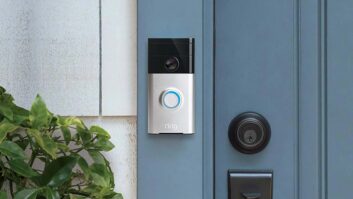NEW YORK — Head-up displays (HUDs) are a niche in the consumer aftermarket, but Garmin’s introduction of its first portable HUD could spur its navigation-device competitors to follow suit as they struggle with a declining PND market, said John Canali, senior analyst at Strategy Analytics.
Tier-one aftermarket autosound suppliers might also take a closer look at the category if Garmin is successful, he said.
HUD suppliers, however, face challenges in turning the niche market into a big money-maker, he said. “There is low consumer awareness of HUDs, and how much can you spend to explain it to them?” And “even after you explain it, people might question why they want it. HUDs in commercial markets “are more compelling” because they promote safety, which Canali said is “difficult to sell to consumers.”
Garmin’s $129-suggested HUD, available later this summer, projects navigation information onto a windshield from a Bluetooth-connected smartphone that’s running a Garmin StreetPilot or Navigon navigation app.
TomTom and Magellan also offer navigation apps for smartphones, but Canali pointed out that HUDs could potentially be used with Bluetooth-connected PNDs as well.
Garmin’s HUD displays turn arrows, distance to the next turn, current speed and speed limit, estimated time of arrival, potential traffic delays, safety-camera locations, and visual prompts that let drivers know what lane to be in for the next maneuver.
The apps themselves deliver spoken turn-by-turn directions through the smartphone’s speaker or through a Bluetooth-connected car stereo. When the spoken directions mute during a phone conversation, HUD continues to display navigation information.
Consumers can display navigation information on their windshield via an included transparent film or view the information on an included reflector lens attached to the HUD. The display automatically adjusts brightness level for viewing in direct sunlight or at night. The device also comes with integrated USB port on its power/adapter cable to charge the smartphone while driving.
The device pairs wirelessly with a compatible Bluetoothenabled iPhone, Android, or Windows Phone 8 smartphone.
Other portable HUDs are available in the U.S. aftermarket from relatively unknown brands but are limited to displaying speed, RPMs, battery voltage, engine temperature, tire pressure and the like when plugged into a vehicle’s OEM OBD-II port. Some display only speed as calculated by an internal GPS receiver. Prices range from $99 to $299 for a model with included wheel sensors to wirelessly transmit tire-pressure levels to a HUD.













